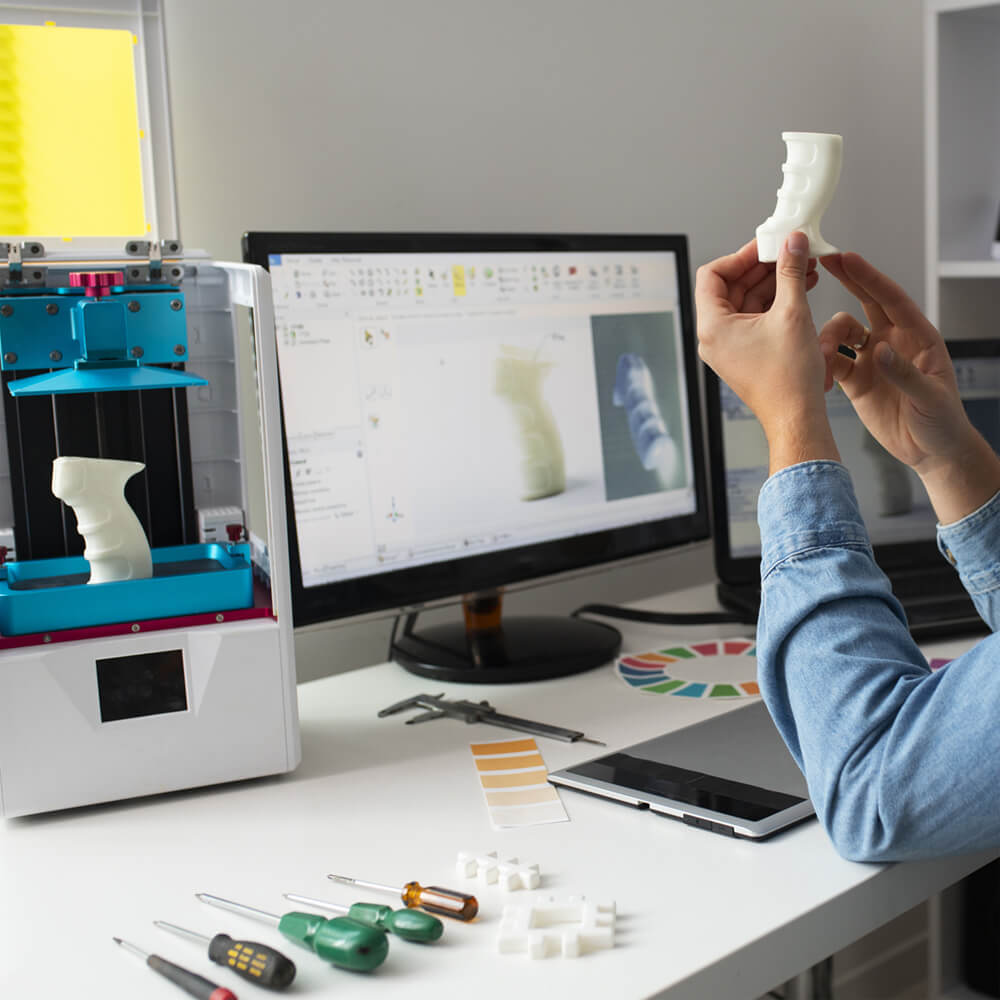3D Printing
3D Printing or Addtive Manufacturing (AM) is a process of making three dimensional solid objects from a digital file. Rapid Manufacturing (RM) and Rapid Prototyping (RP) works by building up solid objects layer by layer in a manner similer to a 2d printer with the ‘printed’ layers stacked on top of each other.
3D printing, also known as additive manufacturing, is a process of creating physical objects from digital designs. This technology works by building up layers of material, such as plastic or metal, to create a three-dimensional object. The process begins with a digital design file, which is created using computer-aided design (CAD) software.
The design is then sent to a 3D printer, which reads the file and begins building the object layer by layer. One of the key benefits of 3D printing is its versatility. It can be used to create a wide range of objects, from simple toys and household items to complex medical implants and aerospace components. The ability to create custom, one-of-a-kind objects is also a major advantage of 3D printing.
This technology allows designers and engineers to quickly create prototypes and test new ideas without the need for expensive tooling or manufacturing processes. In recent years, 3D printing has become more accessible and affordable, thanks to advances in technology and materials. Today, there are a wide range of 3D printers available on the market, from small desktop models to large industrial machines.

- FDM- Fused Deposition Modeling
- SLA- Stereolithography
- SLS- Selective Laser Sintering
- DLP- Digital Light Processing
- CJP- Color Jet Printing
